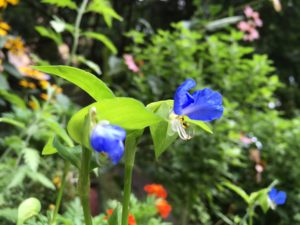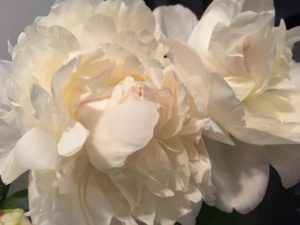Two wild daylilies, remnants of another blooming season, stood in solitude near the highway. Traffic and noises were all irrelevant to their existence. Their orange flowers echo the brightness of the midsummer sun. I had an urge to stop traveling and to get closer to them.
It seems that there are more varieties of cultivated daylilies showing up in nurseries every year. Other than plentiful sunshine, they do not ask for much care. Easily, they win the hearts of gardeners. From pale yellow to dark maroon, they illuminate gardens large and small.
I, however, am privy to the old-fashioned orange ones. Cultivation of 萱草was documented in Han 漢dynasty (200 BC). It symbolizes motherly love, which soothes one’s anxiety. Hence, it is also known as “forget-sorrow” 忘憂草. Traditionally, 北堂 (northern hall) means women’s residence. The term 北堂萱草 appears often in Chinese literature. In addition to its symbolic and literary significance, daylilies are also known for their medicinal and nutritious values. In Chinese herbal medicine, it is used as digestive, antitoxin and antidepressant.
One summer day, mom put an interesting dish on the table. Mixed with chicken, there were some flower buds. Mom said that they were young 金針 (golden needles). We had golden needles in the garden but never picked them. Mom explained that only the unopened buds were good to eat. Since we liked to enjoy the flowers, it wouldn’t be a good idea to pick them.
Fresh golden needles are a far cry from the dried ones in hot-and-sour soup. Instead of stringy and slightly acidy, they are sweet and crunchy. Since coming to the States, I haven’t seen fresh golden needles on the market, not in regular grocery stores, not in farmers market, and not even in Chinese stores. Every time I saw a field of wild daylilies, I always wondered why no one would harvest the flower buds.
In recent years, large-scale cultivation of daylilies combined with tourism has improved economic opportunities for farmers in Eastern Taiwan. From July to September, hills and valleys are blanketed by golden orange flowers. Bed-&-breakfasts are booked months in advance. Productions of fresh and dried golden needles continue to grow.
Glory to daylilies!
Travel information for daylily blooming season:
Liushishi Mountain-East Rift Valley


